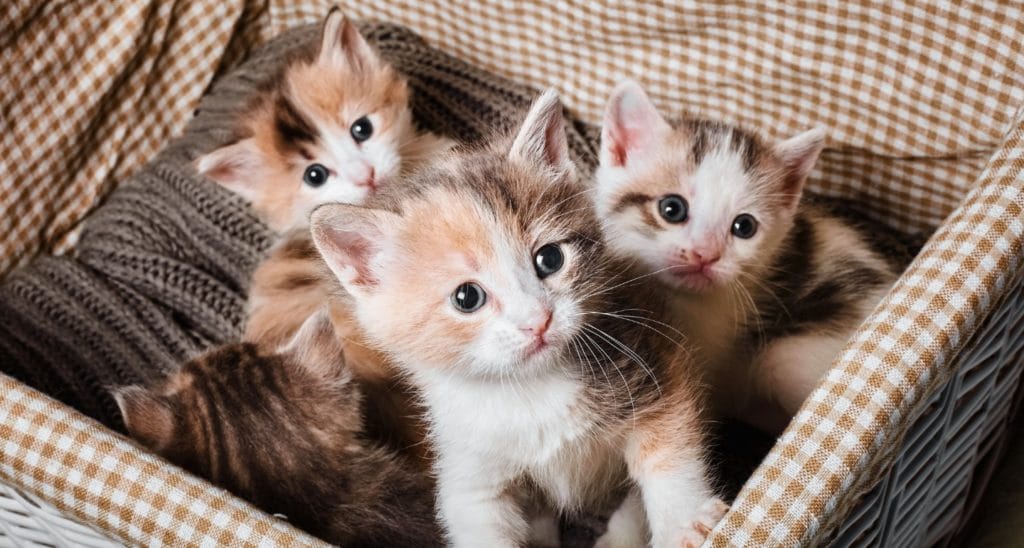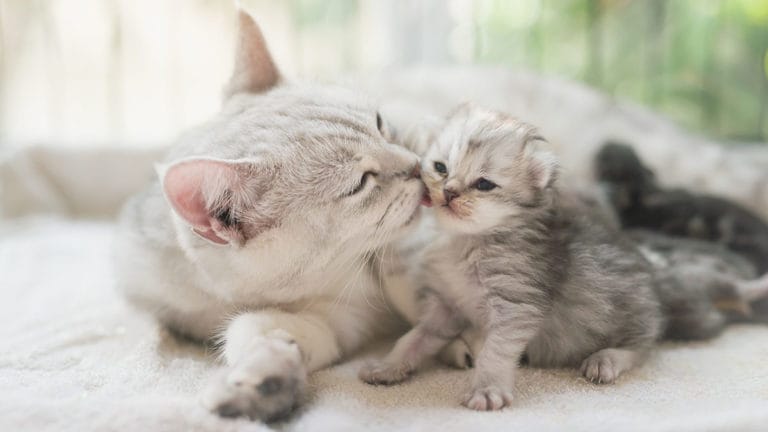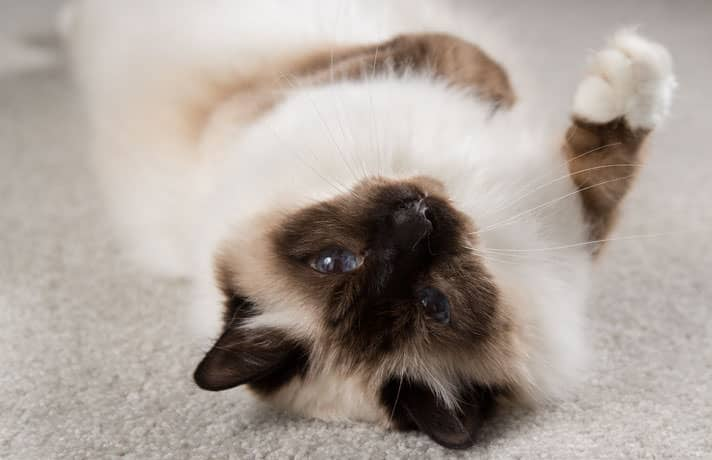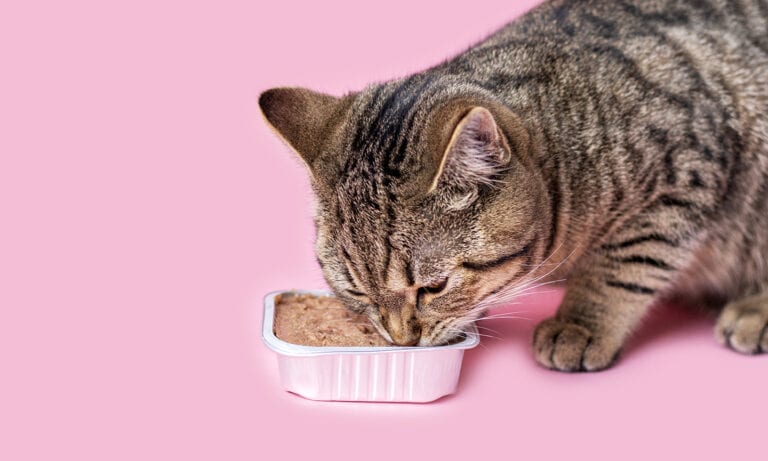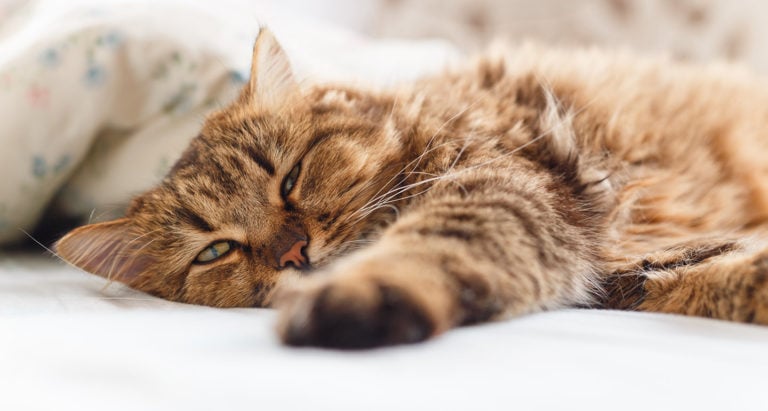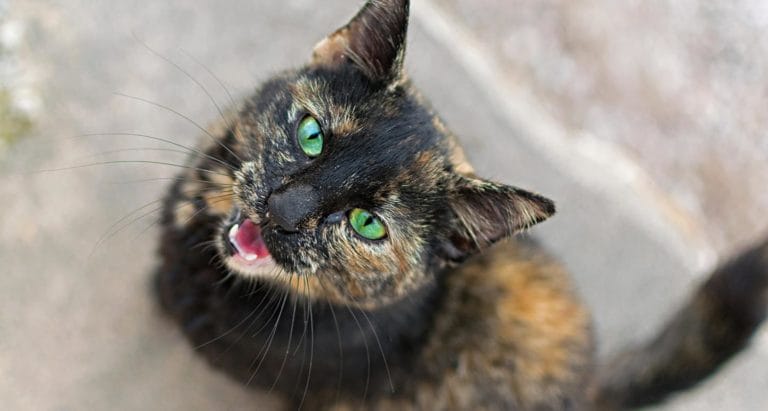Witnessing another creature come into the world is a pretty amazing experience, whether human or animal. The first birth I witnessed was that of our calico cat, Fluffy, delivering her first litter of kittens when I was about 6 years old.
Most cats, or queens (unspayed female cats), have a litter of three to five kittens, but feline litters can vary in size from one to more than 10. That’s a big range. So what kinds of factors can affect the size of a litter?
Factors That Influence Litter Size
Experts say that the mother’s age and health, as well as both parents’ genetic histories, influence the size of the litter. For example, a young or first-time queen typically produces a smaller litter of up to three kittens.
Breed also can affect the number of kittens in a litter, according to Tammy Sadek, a board-certified veterinarian specializing in feline practice who founded and owns Kentwood Cat Clinic in Kentwood, Michigan and Cat Clinic North in Grand Rapids, Michigan.
“Siamese-type cat breeds often have larger litters, Persian-type cat breeds often have smaller litters and Manx cats lose one-fourth of the kittens in every litter if bred tailless to tailless,” she says.
Queens are seasonal breeders, which means they come into heat, or estrus, during certain seasons of the year. Outdoor cats most often cycle in the spring and summer when the days get longer, and they quit cycling when the days get shorter. Because indoor cats are exposed to artificial lights, they might cycle year-round.
Cats also are induced or reflex ovulators; this means the act of breeding stimulates or induces ovulation or the release of eggs from the cat’s ovaries. Because of this, the more breeding encounters the cat has, the more kittens are produced, and they can be from different fathers, Sadek explains.
Certain feline infections can affect the litter size and vitality. For example, feline infectious peritonitis (FIP), can decrease the infected cat’s fertility or alters the kittens’ ability to thrive, Sadek says. And pregnant cats that become infected with feline panleukopenia virus (FPV), or feline distemper, can end up with stillborn kittens, a reduced the numbers of kittens at birth, or even abortion of the litter if the queen is infected early in pregnancy, she says, adding that the virus can affect the surviving kittens’ brain development and cause cerebellar hypoplasia and mobility issues if the queen is infected later in the pregnancy.
Just like with humans, the mother’s nutritional status also can change the outcome of her pregnancy and the health of her kittens. If the queen is starving or malnourished, it influences the number of stillborn versus viable kittens she delivers.
Despite her young age and it being her first litter, Fluffy produced a rainbow of five healthy kittens: one calico, and one each of her colors — white, orange, gray, and black and white (the only male).
Determining Your Cat’s Litter Size
To find out how many kittens your cat is carrying, taking her in to the veterinarian is your best method. During gestation, with lasts an average of 63 to 66 days, there are three commonly-used methods that veterinarians use to find out how many kittens will be in a litter.
“Sometimes you can palpate the pregnant uterus and feel the amniotic sacs and get a rough idea,” Sadek says. (Palpate means to gently press on the queen’s uterus to note how many kitten embryos are in there).
Ultrasounds also can be used to confirm pregnancy and estimate the litter size, but Sadek warns that both ultrasounds and palpation can give a general idea but can be off by a kitten or two. For a more accurate count, experts recommend an X-ray in later pregnancy.
We did not get Fluffy X-rayed to find out how many kittens she was carrying, but it turns out this is important information. Sadek says that delivery can be difficult if there are only one or two kittens, especially for a first-time mama because the babies can be quite large and might not pass through the birth canal easily. In some cases, a C-section might be required to save the life of the cat and/or her kittens.
“Also, when the mama is queening, sometimes they will birth some but not all the kittens,” Sadek added. “If the kitten stays in the uterus, it will die and can cause a life-threatening uterine infection and peritonitis to the queen.”
Additionally, if your cat delivers a large litter and does not have an adequate milk supply, the kittens might need supplemental feeding by another queen or by bottle or feeding tubes. There also are times when queens ignore the smaller, weaker kittens, which can die or require orphan-type care.
To avoid future litters, we had Fluffy spayed once she stopped nursing her babies. However, if she had delivered additional litters, there was no guarantee the total would be the same. According to Sadek, the number of babies a queen births depends on how many times she is bred during estrus, her age, the male’s fertility, her nutritional status, her disease status, her stress status and more.
World’s Largest Litters
So you might wonder how many kittens were in the largest litters. According to Guinness World Records, the world’s largest litter of domestic cats was 19 born to a Burmese/Siamese queen belonging to Valerie Gane in Kingham, Oxfordshire, U.K. The kittens were born on August 7, 1970, and four were stillborn. Of the surviving kittens, all but one were male.
Several sources put the next largest litters at 15 kittens and both taking place in 1976. One litter was birthed in New York with 4 stillborn, and the other was in Havelock, Ontario, Canada. That’s a lot of kittens!
By: Sandy Chebat
Share:
